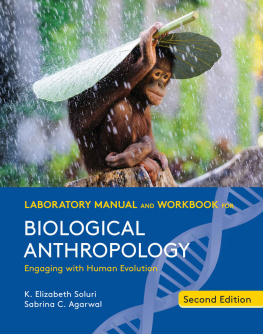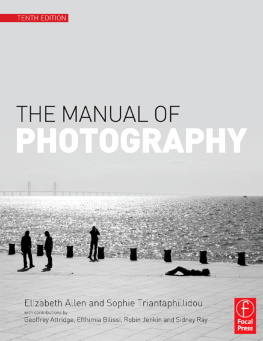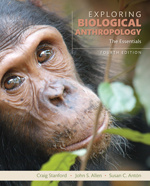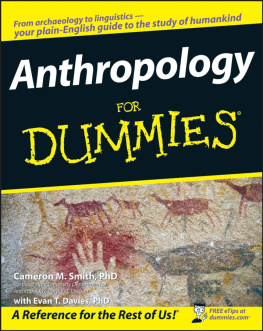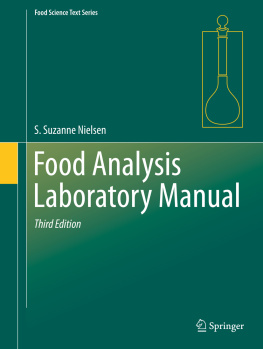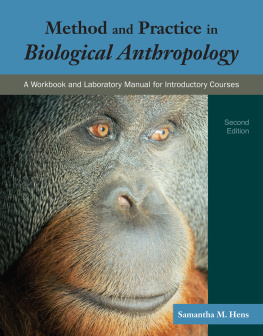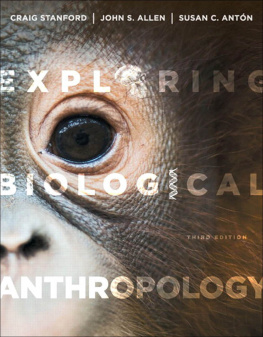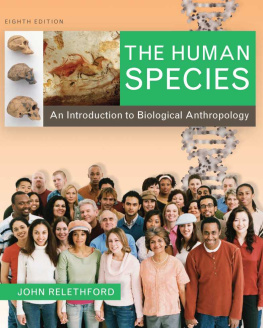K. Elizabeth Soluri - Laboratory Manual and Workbook for Biological Anthropology (Second Edition)
Here you can read online K. Elizabeth Soluri - Laboratory Manual and Workbook for Biological Anthropology (Second Edition) full text of the book (entire story) in english for free. Download pdf and epub, get meaning, cover and reviews about this ebook. year: 2019, publisher: W. W. Norton & Company, genre: Politics. Description of the work, (preface) as well as reviews are available. Best literature library LitArk.com created for fans of good reading and offers a wide selection of genres:
Romance novel
Science fiction
Adventure
Detective
Science
History
Home and family
Prose
Art
Politics
Computer
Non-fiction
Religion
Business
Children
Humor
Choose a favorite category and find really read worthwhile books. Enjoy immersion in the world of imagination, feel the emotions of the characters or learn something new for yourself, make an fascinating discovery.
- Book:Laboratory Manual and Workbook for Biological Anthropology (Second Edition)
- Author:
- Publisher:W. W. Norton & Company
- Genre:
- Year:2019
- Rating:3 / 5
- Favourites:Add to favourites
- Your mark:
- 60
- 1
- 2
- 3
- 4
- 5
Laboratory Manual and Workbook for Biological Anthropology (Second Edition): summary, description and annotation
We offer to read an annotation, description, summary or preface (depends on what the author of the book "Laboratory Manual and Workbook for Biological Anthropology (Second Edition)" wrote himself). If you haven't found the necessary information about the book — write in the comments, we will try to find it.
Laboratory Manual and Workbook for Biological Anthropology (Second Edition) — read online for free the complete book (whole text) full work
Below is the text of the book, divided by pages. System saving the place of the last page read, allows you to conveniently read the book "Laboratory Manual and Workbook for Biological Anthropology (Second Edition)" online for free, without having to search again every time where you left off. Put a bookmark, and you can go to the page where you finished reading at any time.
Font size:
Interval:
Bookmark:
Please note that this version of the ebook does not include access to any media or print supplements that are sold packaged with the printed book.


To all of our students for inspiring us to reach for new heights in our teaching.
W. W. Norton & Company has been independent since its founding in 1923, when William Warder Norton and Mary D. Herter Norton first published lectures delivered at the Peoples Institute, the adult education division of New York Citys Cooper Union. The firm soon expanded its program beyond the Institute, publishing books by celebrated academics from America and abroad. By midcentury, the two major pillars of Nortons publishing programtrade books and college textswere firmly established. In the 1950s, the Norton family transferred control of the company to its employees, and todaywith a staff of five hundred and hundreds of trade, college, and professional titles published each yearW. W. Norton & Company stands as the largest and oldest publishing house owned wholly by its employees.
Copyright 2020, 2016 by W. W. Norton & Company, Inc.
All rights reserved
Second Edition
Cover design: Marisa Nakasone
Cover images: Orangutan: Andrew Suryono
DNA art: inspired-fiona/Shutterstock
Editor: Jake Schindel
Developmental Editor: Sunny Hwang
Project Editor: Taylere Peterson
Associate Editor: Rachel Goodman
Managing Editor, College: Marian Johnson
Managing Editor, College Digital Media: Kim Yi
Associate Director of Production, College: Benjamin Reynolds
Media Editor: Miryam Chandler
Media Project Editor: Rachel Mayer
Media Associate Editor: Ariel Eaton
Ebook Production: Michael Hicks
Marketing Manager, Anthropology: Kandace Starbird
Designer: Jillian Burr
Photo Editor: Travis Carr
Director of College Permissions: Megan Schindel
Permissions Specialist: Elizabeth Trammell
Composition: Achorn International, Inc.
Illustrations: Imagineering Art
Permission to use copyrighted material is included alongside the appropriate images and in the backmatter.
ISBN: 978-0-393-68068-3 (pbk.)
ISBN: 978-0-393-69749-0 (ebook)
W. W. Norton & Company, Inc., 500 Fifth Avenue, New York, NY 10110
wwnorton.com
W. W. Norton & Company Ltd., 15 Carlisle Street, London W1D 3BS
K. Elizabeth Soluri (Cabrillo College) is faculty in the Anthropology Department at Cabrillo College. She received her B.A. from New York University and her M.A. and Ph.D. from the University of California, Berkeley. She has conducted anthropological field and laboratory research across the United States, including work in Valley Forge National Historical Park, Hawaii, and the central California coast. Elizabeth is especially interested in pedagogy and issues of student learning, and her ongoing research focuses on redesigning, implementing, and evaluating effective teaching methods for undergraduate anthropology courses, particularly biological anthropology. Elizabeth has taught anthropology courses at several 2-year and 4-year institutions throughout the San Francisco Bay area.
Sabrina C. Agarwal (University of California, Berkeley) is professor of anthropology at the University of California, Berkeley. She received her B.A. and M.Sc. from the University of Toronto and her Ph.D. from the same institution, working in both the Department of Anthropology and the Samuel Lunenfeld Research Institute of Mount Sinai Hospital, Toronto. Her research interests are focused broadly on age-, sex-, and gender-related changes in bone quantity and quality, particularly the application of biocultural and life course approaches to the study of bone maintenance and fragility and its application to dialogues of social identity and developmental plasticity in bioarchaeology. Sabrina has authored numerous related scholarly articles and edited volumes, and she is the co-editor-in-chief for Bioarchaeology International. She is interested in the philosophies of teaching, and she is actively involved in the pedagogical training of current and future college instructors.
The introductory laboratory in biological anthropology can be an inspiring place. It is exciting to see students interact with materials and concepts that may be entirely novel and unfamiliar to them. Of course, it is a challenging place, too, a place with many students who enrolled without foreseeing the scientific content and detail of the course. This was the case when we taught introductory biological anthropology at the University of California, Berkeley, and decided to redesign the laboratory portion of the course in 2005. In doing so, we had three overarching goals: (1) we wanted to emphasize active student engagement as a way to strengthen learning and long-term retention of course content, (2) we wanted to help students from diverse backgrounds and with varying degrees of experience in anthropology learn the key information about human biology and evolution, and (3) we wanted a lab manual that would be simple for instructors to implement in their classes, whether it is used in pieces or as a whole.
We decided to attack this task both with creativity and with a research and empirical approach emphasizing constant reassessment and improvement. We began simply by creating weekly lab exercises that corresponded to the topics covered in the course and were based on principles of learning from current pedagogy and cognition literature. Then, we spent the next several years trying these lab assignments in classrooms, tweaking them, and testing them again. We also collected empirical data about student engagement, initial learning, and long-term retention of knowledge from the lab component of the course. The data formed the basis for one authors (Soluri) doctoral dissertation, which explicitly examined effective pedagogical methods in biological anthropology instruction. With proof of concept at the initial implementation at U.C. Berkeley, the exercises, questions, and text were then expanded, tested, and refined in additional classroom environments, including community college courses in the San Francisco Bay area. We wanted to make sure our approach would work with as broad an audience as possible.
As a result, we believe this manual has developed into something unique among biological anthropology laboratory manuals.
- The manual addresses a wide range of topics relevant to introductory biological anthropology courses, including genetics and evolutionary theory, skeletal biology and forensic anthropology, primatology, and paleoanthropology. We provide a balanced approach to the topics that gives students a well-rounded foundation in the discipline. We also present concepts, such as modern human variation, that are central to biological anthropology but are often not emphasized in laboratory texts. In doing this, we help students build the most comprehensive biological anthropology skill set possible. Each of the lab exercises has been designed with real students in mind, and their effectiveness has been tested and fine-tuned over many semesters in real classrooms at various institutions.
- The authors concern with employing effective pedagogy has resulted in a distinctive text that explicitly emphasizes a student-centered learning experience. The manual applies active-learning pedagogy, which emphasizes the importance of students hands-on involvement in learning. It is ideal for laboratory contexts where the goal is to foster the development of key skills as well as content knowledge.
Font size:
Interval:
Bookmark:
Similar books «Laboratory Manual and Workbook for Biological Anthropology (Second Edition)»
Look at similar books to Laboratory Manual and Workbook for Biological Anthropology (Second Edition). We have selected literature similar in name and meaning in the hope of providing readers with more options to find new, interesting, not yet read works.
Discussion, reviews of the book Laboratory Manual and Workbook for Biological Anthropology (Second Edition) and just readers' own opinions. Leave your comments, write what you think about the work, its meaning or the main characters. Specify what exactly you liked and what you didn't like, and why you think so.

